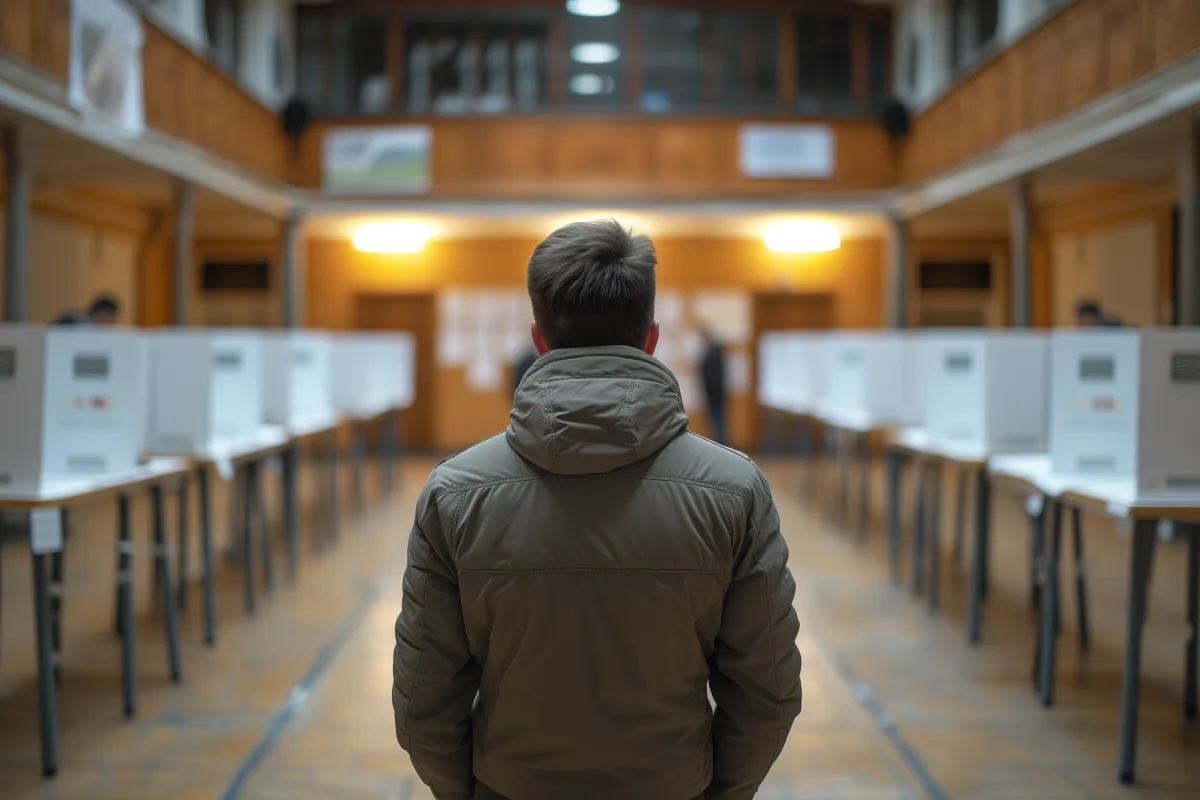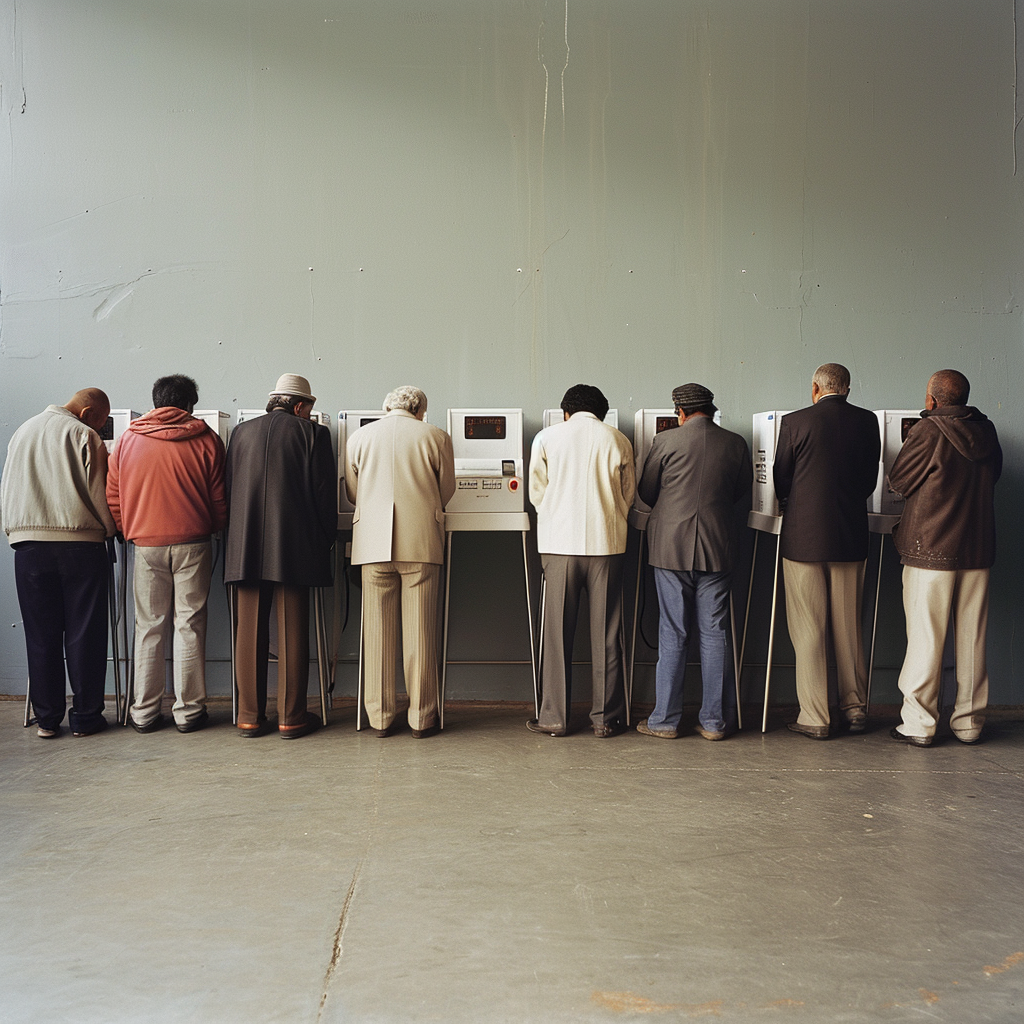Blog
Write a bio for any political event that makes you a memorable star...

Boosting Voter Turnout: Predictive Modeling Strategies
Envision a society in which every individual is driven by a sense of responsibility to cast their vote, thereby ensuring that each electoral outcome genuinely mirrors the collective desires of the populace. That's the power behind Boosting Voter Turnout: Predictive Modeling Strategies. This piece delves into how data-driven techniques are transforming political campaigns and elevating voter engagement.
You'll get an insider look at how technology bridges gaps between potential voters and the ballot box, ensuring no voice is left unheard. Plus, we're unpacking factors that sway local elections - think education level and income - offering insights on mobilizing young voters effectively.
By the end of Boosting Voter Turnout: Predictive Modeling Strategies, you'll see why understanding voting patterns among different demographics isn't just smart; it's crucial for crafting more inclusive strategies that bring higher turnout rates across the board.
Boosting Voter Turnout: Predictive Modeling Strategies
The art of predictive modeling is revolutionizing the intricate challenge that political campaigns face in mobilizing voters to cast their ballots. Diving into data and crunching the numbers, these models are surprisingly good at forecasting voter turnout. It's a game-changer for campaign strategies aiming to increase voter turnout.

Understanding Predictive Models
Delving into the past, predictive analytics meticulously sift through old voting logs and questionnaire responses to uncover trends that often escape immediate detection. For instance, Hal Malchow's work on Predicting Turnout in a Presidential Election illustrates how subtle factors can forecast participation rates long before election day rolls around. This insight lets campaigns focus their efforts where they're most needed—be it mobilization or persuasion.
However, these forecasts not only pinpoint who's likely to cast a ballot but also unravel the reasons behind the higher polling inclination among specific groups. From age and education level to socio-economic status, these variables significantly impact turnout rates across federal elections.
The Impact on Campaign Strategies
Campaigns leveraging this technology have an edge like never before. They can tailor messages specifically designed to resonate with segments identified by predictive analytics as having higher or lower propensity to vote. Social media channels morph into formidable instruments within this toolkit, enabling nuanced interaction predicated on the revelations from intricate algorithms.
Grasping the essence of voter behavior via analytical insights allows for a more calculated distribution of efforts, guaranteeing that each advertisement purchase, doorstep conversation, and telephonic outreach plays a pivotal role in elevating participation rates across the board.
Enhancing Voter Engagement Through Technology
The evolution of voting tech has transformed the electoral landscape, making sure that each ballot is valued and accounted for. The leap from snail-mail ballots to the fortress-like safety of modern vote counters has revolutionized how we partake in democracy's most fundamental act.
Let's talk about how online platforms have made it easier for voters to understand their ballot box choices before election day rolls around. These digital tools not only demystify the voting process but also provide crucial information on voting data that can guide decisions at the polls.
But here's a kicker: while we celebrate high-tech advancements like electronic voting systems, there's a simple yet powerful tool making waves—mail ballots. They've proven essential in increasing turnout by letting people cast their votes without leaving home. This approach has shown us that sometimes blending old-school methods with new tech gives everyone a fair shot at having their voice heard.
The use of comprehensive databases and predictive analytics further allows political campaigns to pinpoint where voter engagement efforts should be concentrated. Delving into historical voting tendencies and dissecting them with an array of data streams, campaigns are now tailoring their engagement tactics to connect on a more individual level with those wavering on the edge of participation.
In essence, integrating technology into our electoral processes isn't just about flashy gadgets or complex algorithms; it's about creating an inclusive environment where all eligible voters feel empowered and informed enough to take part in shaping their future.
Factors Influencing Local Election Turnouts
Increasing voter turnout in local elections can seem like a riddle wrapped in a mystery. But when you break it down, several key factors emerge that significantly sway the scales of participation. Grasping the essence of these components is pivotal for campaigns aiming to amplify their reach and involvement.
Education Level and Political Party Affiliation
The level of education a voter has often correlates with their likelihood to head to the polls. People with more education often hit the polls in greater numbers, fueled by a deeper grasp of how politics shapes everyday existence. Similarly, strong affiliation with a political party motivates voters to support their candidates, reflecting deeply held beliefs or policy preferences.
Wealthier citizens often mark their ballots more consistently than those facing financial hardships, suggesting that one's economic standing significantly influences their engagement in the voting process. A startling statistic reveals affluent voters have 30-50 percent higher turnout than low-income voters.
Voting Laws and Their Impact
Voting laws can either encourage or hinder voter turnout. For instance, stringent voter identification requirements may disproportionately affect certain demographics such as non-white populations who vote at rates 20 percent lower compared to white voters according to this analysis. Simplifying registration processes and making voting more accessible are potential levers for increasing participation across all segments of society.
Strategies for Mobilizing Young Voters
Voter outreach efforts have been struggling to engage the younger demographic, which historically shows lower participation rates in elections. Surprisingly, voters aged 65+ are seven times more likely to vote than those between 18 and 34 years old. Bridging this divide not only poses a formidable hurdle but equally opens the door for inventive strategies to rally support.
Social Media Engagement
Harnessing the power of social media stands as a formidable asset, offering an avenue to connect directly with young electorates in their digital habitats. Platforms like Twitter, Instagram, and Facebook offer direct channels to young voters where they spend a considerable amount of their time. By crafting compelling content that resonates with their values and concerns, political campaigns can spark interest and drive higher turnout among this group.
To boost these initiatives, research indicates that customizing communications to underscore the significance of each vote on distinct matters like environmental preservation or educational transformations can notably encourage youth participation in voting.
Mobilization Efforts Beyond Social Media
Stepping outside the digital sphere, captivating young electorates demands inventive strategies that align with their daily habits and tastes. Hosting interactive events on college campuses or collaborating with popular influencers can bridge the gap between political discourse and daily life experiences of younger individuals.
By weaving together a digital footprint with tangible interactions, we craft a comprehensive strategy vital in engaging the youth whose electoral decisions hold the power to mold our political landscape profoundly.
The Critical Importance of Voter Registration Efforts
Think about the last time you heard someone say, "My vote doesn't matter." Now, imagine if every eligible voter believed that. Scary, right? That's where voter registration drives come into play. Far from merely tallying up names, these endeavors serve as crucial groundwork in granting people the power to make their voices resonate.

Voter Registration Drives: More Than Just Paperwork
At first glance, voter registration drives might seem like tedious tasks involving paperwork and long lines. But look closer. They're dynamic events bringing communities together, educating citizens on their rights, and reminding us all of our civic duty. For many people, especially in underserved communities or among young adults navigating their first election cycle,
Signing up to vote stands as the initial step towards engaging in democratic processes, especially for those in marginalized communities or young folks embarking on their maiden electoral journey.
Studies have shown that making it easier for eligible voters to register can significantly increase turnout rates. This isn't just theory; it's backed by data from numerous elections across various demographics.
Tackling Challenges Head-On
Boosting voter registration encounters hurdles like false information and indifference, yet it opens doors for experimental design approaches such as streamlined online systems or targeted initiatives aimed at engaging marginalized communities.
Innovative approaches ensure no one is left behind because when more people participate in the electoral process, we get closer to a truly representative democracy.
Conclusion
Boosting Voter Turnout: Predictive Modeling Strategies is more than a goal; it's the future of engaging every eligible voter. You've seen how data can bridge the gap between potential voters and the ballot box, making sure everyone has a say.
We explored how tech influences voting behavior, revealing the variables that affect participation. Grasping these components is not only intelligent but also crucial for crafting strategies that welcome everyone's voice.
Mobilizing young voters? It’s not just possible; it’s necessary.
In essence, using predictive modeling to understand and influence voter behavior lights up paths previously unseen. This knowledge equips campaigns to reach higher engagement levels across all demographics.
So, start applying what you’ve learned today. Let each election reflect the true will of the people through smarter, data-driven approaches.
The only way to know if we're a good fit is to have a chat. Let's talk for 30 minutes and see where the path leads.

Lesix Companies LLC
80 Seven Hills Drive, Suite 101 #103
Dallas, GA 30132
Main Menu
Connect
We use cookies to analyze our website traffic and tailor your experience. We also utilize that information for digital advertising. We also share information about your use of our site with our social media, advertising and analytics partners who may combine it with other information that you’ve provided to them or that they’ve collected from your use of their services. By using this website, you consent to the Privacy Policy and Terms & Conditions. This website is not affiliated nor part of any network of sites outside of the Lesix Family of Companies.
Important: Earnings and Legal Disclaimers
We believe in hard work, adding value, and serving others. We cannot and do not make any guarantees about your own ability to get results or earn any money with our ideas, information, programs, or strategies. Nothing on this page, any of our websites, or emails is a promise or guarantee of future performance or earnings. Any financial numbers referenced here, on any of our sites, or communications are simply estimates or projections or past results, and should not be considered exact, actual or as a promise of potential earnings. This website makes no guarantees about estimates of potential direct mail projects, printing, design, or any other elements.
